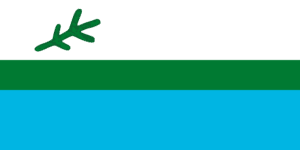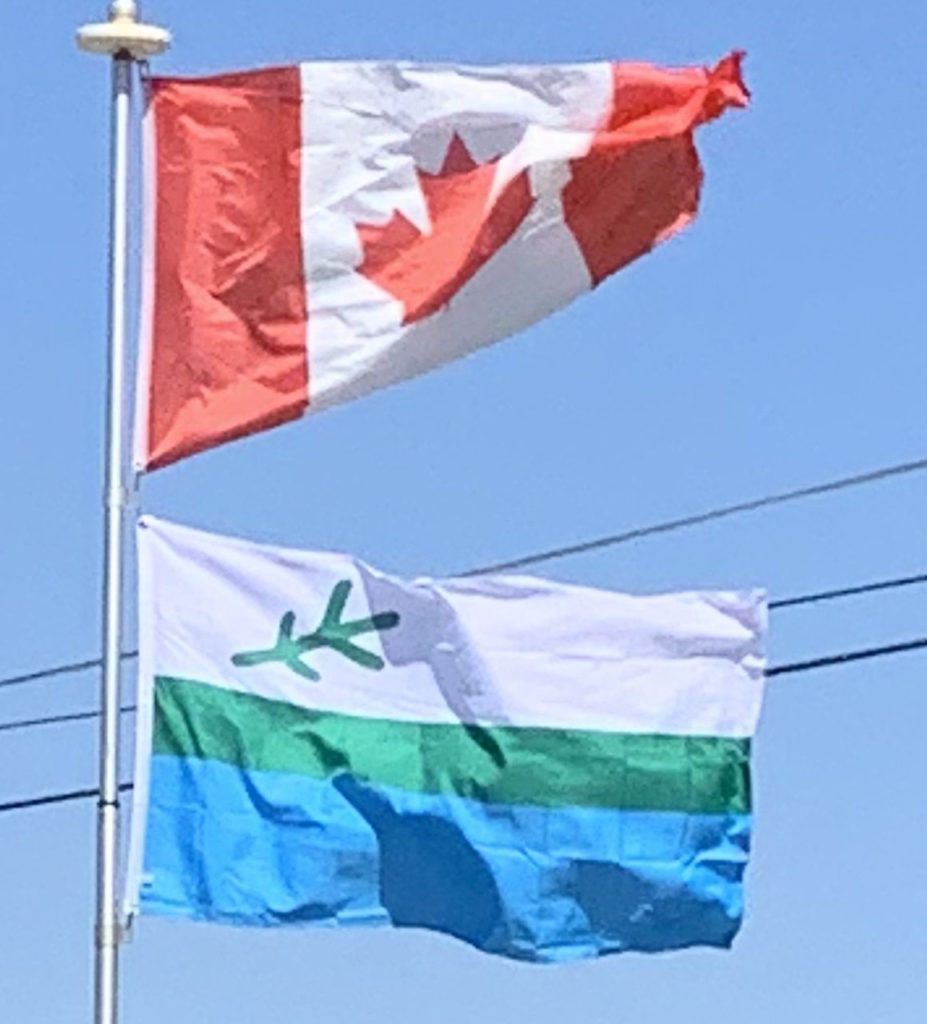Air travel is the most reasonable and well developed means of getting around Labrador. Most communities of any size, including villages of little more than 100 people, benefit from scheduled commercial air links provided by regional carriers that connect to larger airports for further access to the outside world.
Flag of Labrador:
The flag of Labrador, while unofficial, is used to represent the continental part of the Canadian province of Newfoundland and Labrador as distinct from the Newfoundland region of the province. It was created by a small group led by Michael S. Martin, who was then the representative for Labrador South in the provincial legislature.

The flag has been influential in Labrador; its colors are mirrored in the flag of Nunatsiavut, and its black (bog) spruce twig was adopted for use on the Franco-Terreneuvien flag. The black spruce, a member of the pine family, is the most numerous tree in Labrador and in the Province of Newfoundland and Labrador. The black spruce is the official tree of the Province of Newfoundland and Labrador and thus serves as a reminder that Labrador is part of that larger entity.
Impetus:
In 1973, the government of Newfoundland asked the citizens of the province to adopt special projects to commemorate the event of the 25th anniversary of Newfoundland’s 1949 confederation with Canada. Michael S. Martin, the Member of the House of Assembly for the district of Labrador South took this as an opportunity to do something significant to celebrate Labrador’s heritage as part of Newfoundland. The entire province of Newfoundland was without its own identity when it came to a flag, as the Union Jack, the flag of the United Kingdom, had been designated by the provincial cabinet as the flag of the province of Newfoundland in 1952. Martin and several others decided that their project to celebrate would be the creation of a flag for Labrador to give at least that part of Newfoundland an outward symbol of identity.
The flag itself is 1:2 in its proportions and composed of three fesses. From the top they are white, green and blue, in a proportion of 2:1:2. In the left of the white field is a stylized representation of a sprig of the black spruce, the most common tree in Labrador and the province. It is the official tree of the whole province and thus serves as a reminder that Labrador is part of what is now the province of Newfoundland and Labrador. The twig has two year-growths, the first growth shorter than the second growth, and both have three branches (including the center branch), each of approximately equal length.
Symbolism:
The top white bar represents the snow which colors the culture and lifestyle of Labradorians like no other element. The bottom blue bar represents the waters of Labrador which serve as the highway and sustainer of the people of Labrador. The center green bar represents the nurturing land. It is thinner than the other two, as the northern climes of Labrador have short summers.
